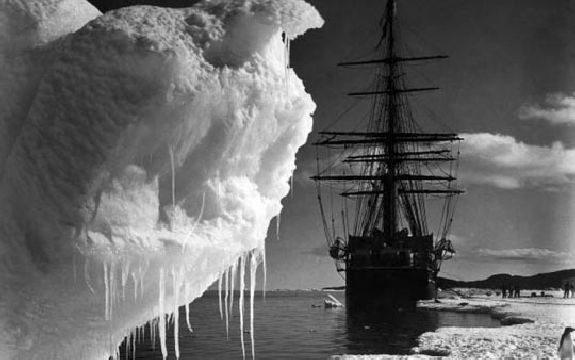The Great White Silence (1924) 

Director: Herbert G. Ponting
Cast: Robert Falcon Scott, Herbert G. Ponting
Synopsis: In 1910 the British Antarctic Expedition, led by Capt. Robert F. Scott, embarks from Lyttleton, NZ on a quest to become the first to reach the South Pole.
The tragic fate that awaited Captain Robert Falcon Scott’s ill-fated expedition to the South Pole in 1911 lends Herbert G. Ponting’s documentary account of the ill-fated trip a poignancy it would obviously not have possessed had Scott and his three companions made it safely back from their journey. It certainly gives Ponting’s movie the edge over the similar documentary South, which chronicled the 1914-1916 exploration of the Antarctic by Sir Ernest Shackleton, even though it follows a very similar format.
Scott’s expedition departed from New Zealand in the spring of 1911 conscious of the fact that the Norwegian explorer Captain Amundsen had launched his own expedition with the same objective: to be the first to reach the South Pole. It starts off in high spirits, with members of the expedition whiling away the time by larking around and dancing on the deck, and the movie captures some hauntingly beautiful images of seagulls wheeling in the ship’s wake against a backdrop of the distant New Zealand coastline at dusk. The BFI have done an incredible job of restoring the film, and these pristine images belie the fact that it is now more than 100 years old. An angry sea foreshadows the troubles that ultimately await Scott and his men, but they refuse to allow it to dampen their spirits.
As the ship journeys ever further south, it encounters majestic icebergs towering high into a sky unblemished by clouds, a flawless canvas which emphasises their stark beauty. The ship ploughs its way through pack ice, its progress captured by Ponting filming on a makeshift gantry of planks jutting precariously from the ship’s side. At last, the ship reaches the Antarctic coastline, and the serious business begins.
Ironically, it’s at this point that Ponting’s account loses focus, becoming distracted by the local wildlife, particularly the antics of the Adelie penguins, which he seems to find particularly captivating. While Scott and his men are off doing who knows what, we spend about twenty minutes in the company of these creatures. They’re cute, no doubt about it, but they’re not really why we chose to watch the movie. At last, though, the expedition resumes, with four packs pulled by horses, setting off. At strategic points along the 850 mile route one of these packs would unload its supplies and return to base, until eventually only a party of four men were left. Ponting, too, departed at some point during this stage of the expedition, but he did film the four men huddled together in their tent, removing their footwear after coming in from the cold, and burrowing into their heavy fur sleeping bags. It’s a scene that at least gives us some insight into the cramped conditions they endured near the expedition’s end, with the bad weather closing in around them and hope quickly fading.
Although The Great White Silence provides us with a fascinating and valuable glimpse of the mechanics of Scott’s expedition, it’s damaged by that middle section, which adds little to the tale — although the Shackleton movie did the same thing, which suggests that perhaps that’s what audiences of the day liked to see. And obviously the fact that Ponting was not there to film the appalling conditions which the rapidly weakening men were forced to endure during their doomed attempt to return home means that the movie’s final third offers nothing that we haven’t seen in other documentaries on the subject. It makes for poignant and fascinating viewing nevertheless, and would make a worthwhile companion piece to Charles Frend’s Scott of the Antarctic (1948).
(Reviewed on 6th December 2013)
httpv://www.youtube.com/watch?v=85B-uZVT3Nc
